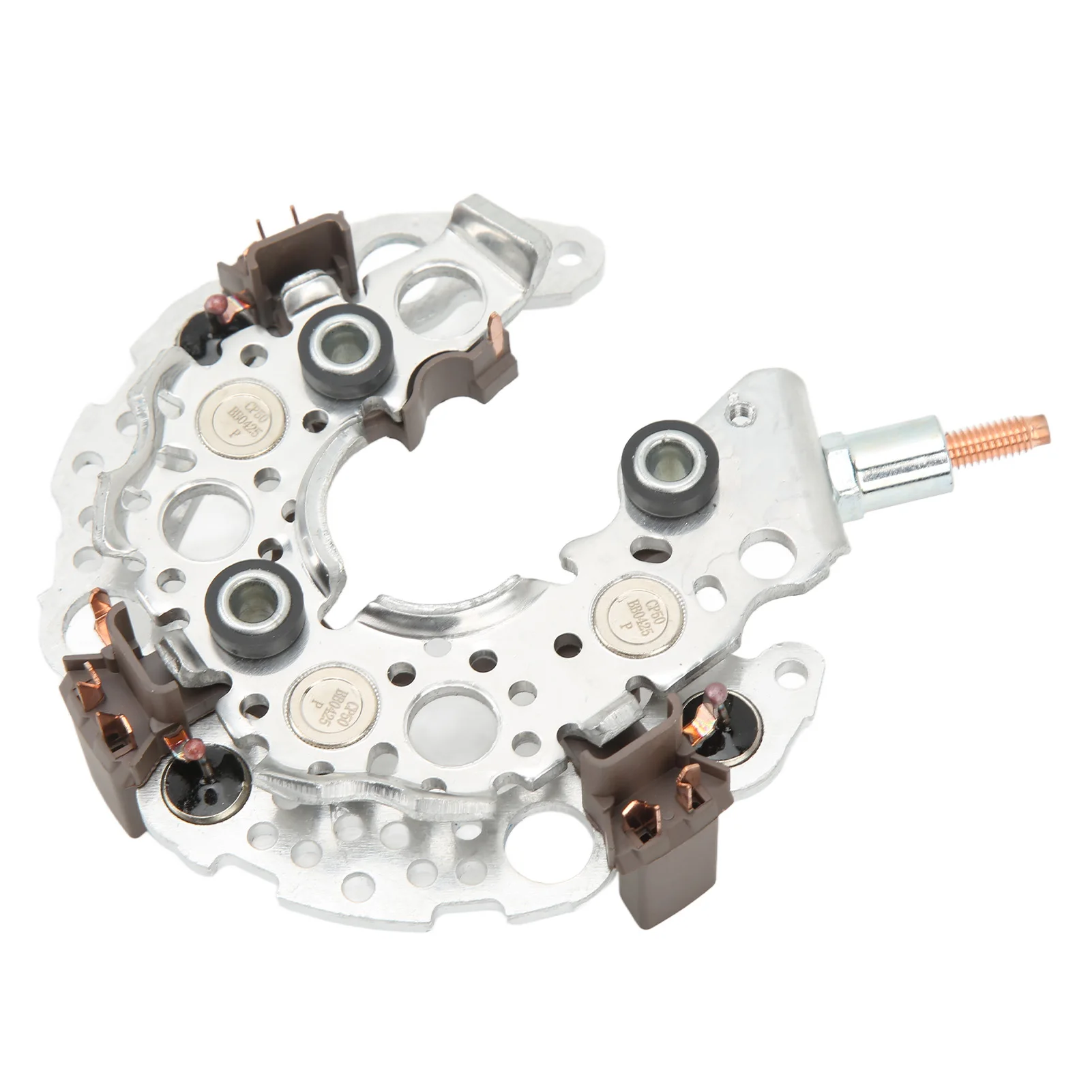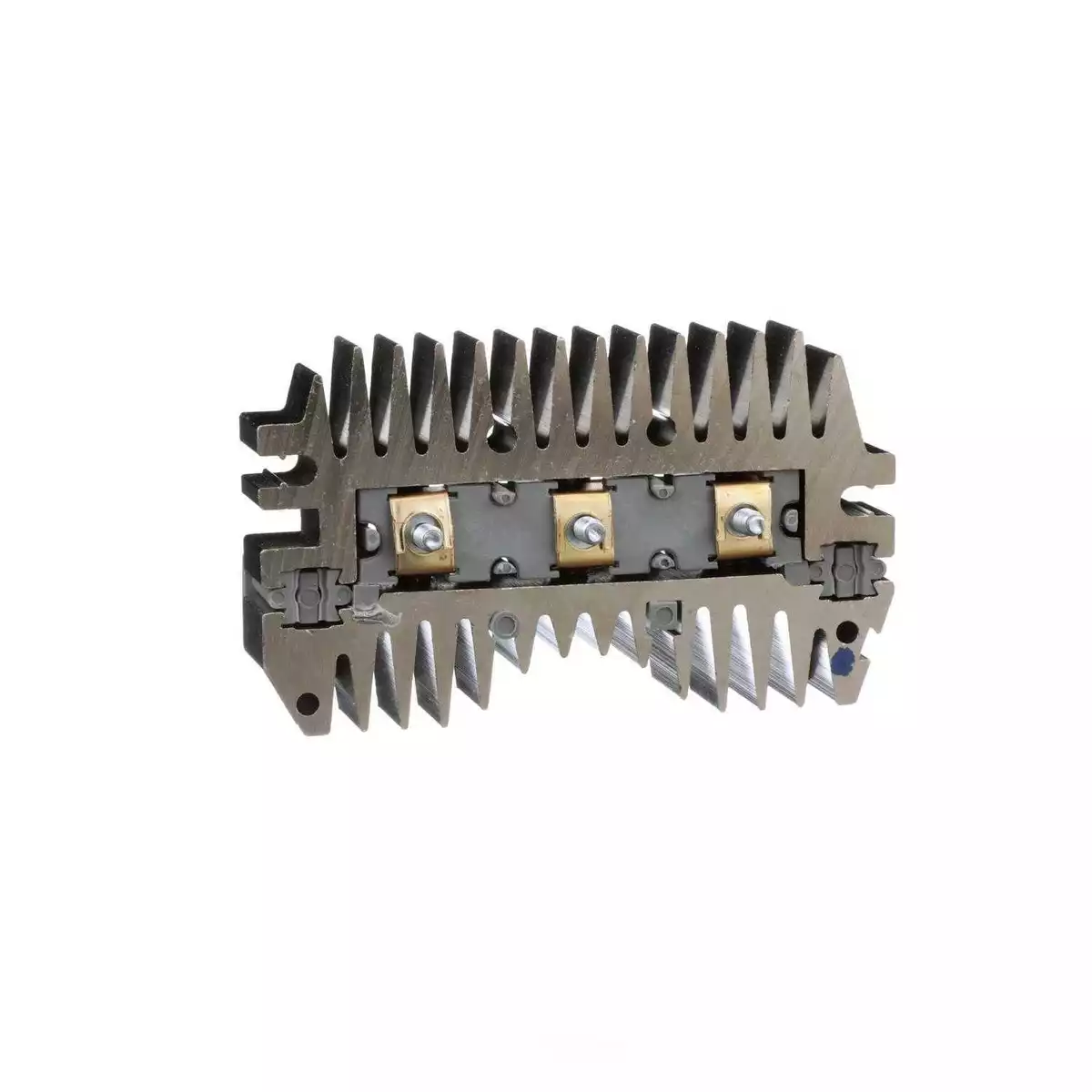


In modern automotive electrical systems, the alternator is a critical component that converts mechanical energy from the engine into electrical energy to power various systems and charge the battery. Traditionally, alternators have relied on passive diode rectifiers to convert the alternating current (AC) output of the stator windings into direct current (DC). However, these passive rectifiers have inherent limitations, such as high voltage drop, power losses, and inefficiency, especially at low alternator speeds.
Active rectifier technology addresses these limitations by replacing the diodes with actively controlled switches, typically MOSFETs (metal-oxide-semiconductor field-effect transistors). This allows for synchronous rectification, where the switches are turned on and off in precise synchronization with the alternator waveform, minimizing conduction losses and improving overall efficiency. Additionally, active rectifiers enable advanced control features and higher power density, making them an attractive solution for modern automotive power generation.
In this article, we will explore the working principles of active rectification, its key components and advantages, and the design considerations for automotive applications. We will also examine how active rectifiers integrate with the alternator system and discuss potential future developments in this technology.

Active rectification in an alternator is based on the principle of synchronous rectification, where actively controlled MOSFET switches are used instead of passive diodes. These switches are turned on and off in precise synchronization with the alternator's AC waveform, allowing for more efficient power conversion and reduced losses.
| Feature | Passive Rectifier | Active Rectifier |
|---|---|---|
| Rectifying Element | Diodes | MOSFETs |
| Efficiency | Lower (~70%) | Higher (>90%) |
| Voltage Drop | Fixed (~0.7V) | Lower (on-state resistance) |
| Control | None | Synchronous with AC waveform |
| Power Density | Lower | Higher |
| Advanced Features | Limited | Power factor correction, voltage regulation, bi-directional power flow |
The MOSFETs in an active rectifier are controlled by a dedicated gate driver circuit, which ensures precise timing and minimizes conduction losses. An independent control power supply provides the necessary voltage and current to operate the gate drivers and control circuitry, regardless of the alternator output voltage. This enables reliable operation over a wide voltage range and allows for the implementation of advanced control features.
Accurate sensing of the alternator voltage and current waveforms is essential for optimal MOSFET switching. The control circuitry continuously monitors the alternator output and adapts the switching timing to maintain high efficiency across various operating conditions.
An active rectifier system consists of several key components that work together to achieve efficient and reliable power conversion:
MOSFET switches: Selected for their low on-state resistance, fast switching speeds, and high current handling capabilities. Proper packaging and thermal management are crucial for optimal performance.
Gate driver circuit: Provides the necessary voltage and current to control the MOSFET switches, ensuring fast and reliable operation. Protection features, such as undervoltage lockout and overcurrent protection, are often incorporated.
Control and regulation circuitry: Manages the overall system operation, including generating switching signals, monitoring output voltage and current, and implementing control and protection algorithms. Advanced features like power factor correction and voltage regulation can be realized through this circuitry.
Active rectification offers several significant advantages over traditional passive rectification:
High efficiency and low losses: Active rectifiers can achieve efficiency levels above 90%, reducing power losses and heat generation. This leads to improved fuel economy, lower emissions, and more available power for the vehicle's electrical system.
Compact size and high power density: The reduced losses and heat generation enable smaller alternator designs with higher power output, providing greater flexibility in packaging and weight reduction.
Flexibility for advanced control schemes: Active rectifiers allow for the implementation of features such as power factor correction, voltage regulation, and bi-directional power flow, enhancing overall system performance and efficiency.
When designing an active rectifier system for automotive applications, several key factors must be considered to ensure reliable, efficient, and safe operation:
Reliability and durability: Automotive electrical systems are subject to harsh operating conditions, including wide temperature ranges, vibration, and exposure to moisture and contaminants. Proper component selection, qualification, and protection measures are essential for long-term reliability.
Thermal management and packaging: Effective heat dissipation is crucial for preventing overheating and ensuring optimal performance. Strategies such as heat sinking, airflow optimization, and advanced packaging techniques (e.g., direct bonded copper substrates) are employed to manage thermal challenges.
Electromagnetic compatibility (EMC): The fast switching of MOSFETs can generate high-frequency noise and electromagnetic interference (EMI). Appropriate EMI suppression techniques, such as snubbers, filters, shielding, and proper grounding, must be implemented to meet stringent automotive EMC requirements.
Integrating an active rectifier with an automotive alternator involves several considerations:
Mechanical and electrical interfaces: The active rectifier must be designed to mate seamlessly with the alternator's mounting points, cooling system, and electrical connections. Proper sizing, insulation, and termination methods ensure reliable and safe operation.
Impact on alternator design and optimization: Active rectification allows for the use of smaller and more efficient alternator components, enabling higher power density and cost-effectiveness. Advanced control strategies, such as variable speed operation or load-responsive output control, can further optimize alternator performance.
Implications for vehicle electrical architecture: The higher efficiency, increased power density, and advanced control features of an active rectifier alternator can enable new possibilities for power management and distribution in the vehicle's electrical system. However, close collaboration between the alternator supplier, vehicle manufacturer, and other system integrators is essential for successful implementation.
As active rectifier technology continues to evolve, several areas of future development are expected to further enhance its performance and value proposition:
Advances in MOSFET and gate driver technology: Ongoing improvements in MOSFET performance, such as lower on-state resistance, faster switching speeds, and higher voltage ratings, will contribute to even greater efficiency and power density. Similarly, advancements in gate driver technology, such as integrated protection features and reduced power consumption, will enhance overall system performance and reliability.
Integration of additional features and functions: Active rectifiers may incorporate additional capabilities, such as built-in voltage regulators, communication interfaces, or diagnostic functions, to further optimize alternator performance and simplify system integration.
Wider adoption across vehicle segments and applications: As the benefits of active rectification become more widely recognized, it is expected to see increased adoption across various vehicle segments, from passenger cars to commercial vehicles and off-highway equipment. Additionally, active rectifier technology may find applications in other automotive electrical systems, such as DC-DC converters or on-board chargers for electric vehicles.
In conclusion, active rectifier technology represents a significant advancement in automotive alternator design, offering improved efficiency, power density, and control flexibility compared to traditional passive rectification. By carefully considering the design challenges and integration aspects, active rectifiers can play a crucial role in optimizing the performance and functionality of modern vehicle electrical systems. As the technology continues to evolve, it is poised to deliver even greater benefits in terms of fuel economy, emissions reduction, and electrical system capabilities.
An active rectifier can achieve over 90% efficiency compared to around 70% for a passive diode rectifier. The reduced conduction losses lead to higher overall alternator efficiency.
Active rectifiers incorporate overcurrent protection by monitoring the output current and limiting or shutting off the MOSFET switches if an overcurrent condition is detected.
The MOSFET switches and drive circuitry generate heat that needs to be dissipated. Proper heatsinking or airflow is required, often utilizing the alternator's existing cooling system.
In many cases, an active rectifier can replace the passive rectifier bridge in the same physical space, allowing a retrofit to upgrade an existing alternator design.
The high-frequency switching in an active rectifier can generate electromagnetic interference (EMI) that must be suppressed through proper shielding, filtering, and grounding techniques.
With its active control capabilities, an active rectifier enables tighter voltage regulation and the ability to implement advanced charging algorithms for optimized battery management.
Automotive active rectifiers are designed for the standard 12V or 24V systems, with current ratings ranging from tens to over a hundred amps, depending on the alternator size.
Yes, by actively controlling the MOSFET switches, an active rectifier can enable bidirectional power flow, which is useful for vehicle-to-grid (V2G) or regenerative braking applications.
Possible failure modes include MOSFET failure, gate driver circuit issues, control logic faults, or power supply failures. Proper design and component selection are crucial for reliability.
An active rectifier is more complex and has higher component costs than a simple diode bridge rectifier, but the efficiency gains and advanced features can justify the added expense.

Miguel started tinkering with car radios as a teenager, fascinated by the intricate dance of wires and circuits. This passion led him to pursue a career as an automotive electrician. For the past 10 years, Miguel has tackled everything from flickering headlights to mysterious electrical gremlins. He thrives on troubleshooting electrical problems and enjoys sharing his knowledge to empower car owners to understand their vehicles better.







